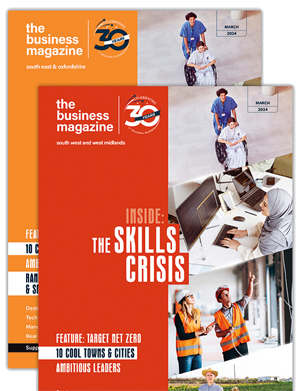Support your workforce during lockdown 3.0

Sarah Lee, Employment Partner at BPE Solicitors discusses the struggles many people are facing in relation to juggling home school, working from home and continuing restrictions to everyday life and how businesses can support their employees through this time.
Whilst on paper, lockdown 3.0 is easier in terms of businesses being used to operating remotely, employees set up to work from home and face masks a common thing, this third round of tough restrictions is proving to be the most challenging from a wellbeing and mental health perspective.
So what should businesses be considering to support employees during what is, hopefully, the final national lockdown?
Supporting home schooling
Whilst this week is ‘half term’, the normal distinction between term-time and holidays has blurred and most parents are faced with the prospect of at least another fortnight of juggling working from home with class zooms calls, worksheets and projects which brings issues both practically and in relation to mental health and wellbeing.
As a business you might want to consider:
- Communicating with employees to see who is affected by this challenge and how you can support them
- Furlough – this can be done flexibly (allowing employees to work part-time and/or to be furloughed on a rotational basis to balance their work and home life and maintain contact and engagement with the workplace) or on a full-time basis for childcare reasons
- Varying employees’ hours (with their agreement), either on a temporary, informal basis or via a formal flexible working arrangement
- Offering leave (e.g. paid holiday, unpaid parental or dependants’ leave, a “sabbatical”…), although furlough may well be a better option
Supporting mental health
The mental health and wellbeing of staff is important for all businesses and this should be promoted throughout your organisation:
- Suggest and encourage regular exercise and screen breaks
- Encourage employees to work reasonable hours and make sure that workloads and objectives are reasonable based on employees’ personal circumstances
- Keep talking to employees so you are aware of issues and concerns
- Remind employees of the existence of Mental Health First Aiders or any Employee Assistance Programmes you have in place
- Suggest and promote informal sessions for people to catch up virtually (as an alternative to the usual catch ups in the staff canteen or kitchen)
Additional support and care
Certain circumstances and groups of people may require more support:
- Employees who are shielding may feel more lonely or anxious and may be more affected financially than other groups (e.g. if they are unable to work from home and are only receiving SSP)
- Employees who need to travel or physically attend their workplace, rather than being able to work from home, may also be more concerned
Businesses can help in these scenarios by again considering whether furlough might be a viable option. For employees who have to attend the workplace, reassure them that COVID secure procedures are in place and support them to avoid public transport/car sharing wherever possible. It may also be possible to vary working hours to allow people to use public transport at non-peak times or to expand parking facilities so that they can use their own transport. Support will also be needed when employees start to return to the workplace as many may, understandably, have concerns about working in close proximity with others after such long periods of working remotely.
What is ‘COVID-secure’?
Whilst most workplaces will already have these procedures in place (and specific guidance is available from the .gov website tailored to individual sectors), key steps for businesses to implement are:
- Promote home working where this is possible
- Carry out appropriate and specific COVID-19 risk assessments
- Enhanced cleaning, particularly for communal areas and touch points
- Ventilation of the premises
- Maintain 2 metre social distancing and the use of screens and face masks as appropriate and necessary
- Remind staff of the need for regular handwashing
- Test and trace signage to record details of staff and visitors for 21 days
- To minimise the number of colleagues staff come into contact with, consider creating ‘bubbles’ of teams who consistently work together (albeit at a distance) and stagger arrival, departure and break times.
What does this mean for you or your business?
In summary, looking after your employees’ physical and mental health is critical at this time, both to maximise employee engagement and your commercial success and also to avoid the potential claims which could arise from getting this wrong, including constructive dismissal, health and safety detriment and dismissal claims and whistleblowing claims.
Please contact Sarah Lee at [email protected] or call 01242 248261 or contact another member of BPE’s Employment Team if you have any questions about this or any other employment matters.
You can also click here for more a more in depth article relating to supporting employees.
BPE is also running a series of free webinars in the coming months focusing on topical employment law matters including employee engagement, key employment cases and protected conversations. For more information and to book a place click here.
Full details of the team and the ways we can support you can be found at www.bpe.co.uk/services/team/employment/
Twitter @BPE_Solicitors
LinkedIn: BPE Solicitors LLP











